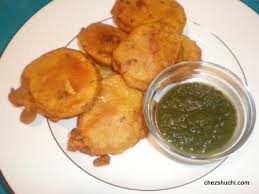The U.S. government’s Dietary Guidelines Advisory Committee is poised to reverse 40 years of “advice” and scrap longstanding guidelines about avoiding high-cholesterol food. In a draft report, cholesterol as found in foods like egg yolks is no longer listed as a “nutrient of concern.”
The cholesterol bogy has been used for several decades to terrify a whole population. For many years, cholesterol levels were considered the ultimate measure of health and fitness in America.
Suppressing cholesterol is not about health. It’s about making money, and the people who created the cholesterol myth did so to make trillions of dollars.
Suppressing cholesterol is like placing something over your car’s heat indicator light expecting to prevent the car from overheating. This is pitiful nonsense, but literally millions of people along with their doctors are thoroughly indoctrinated with this myth. People are actually paying $600 dollars a month for statin drugs to lower cholesterol, that are offending their health far more than elevated cholesterol. A lot of folks are probably using their grocery money to buy these drugs.
Elevated cholesterol and a bad ratio of HDL and LDL is an indicator of an insulin problem. High levels of insulin continuously stimulate production of cholesterol.
Once and for all, fat does not make fat. It does not raise cholesterol or triglycerides and fat consumption does not put on body fat. In fact, fat consumption takes off body fat inside and outside. And what’s shocking, you have to eat fat to lose fat. Good fats, not trans fats or refined oils. Good fats are coconut oil, olive oil, ghee and butter.
Eskimos live on fat — an enormous amount — and they have almost no heart disease, diabetes or obesity. But their fat is omega-3 fat, not omega-6. Why does all the pretended research against fat fail to mention this?
A low fat diet makes you FAT.
Carbohydrates, processed sugars and chemical-laden processed foods are what stimulate body fat storage — and sales of cholesterol drugs. And the caution from government panels and their propagandists against cholesterol drove many people to consume foods high in sugar and carbohydrates.
Carbohydrates stimulate large quantities of insulin, which directly stimulates radical rises in cholesterol. Even though carbohydrates themselves are fat-free, excess carbohydrates end up as excess fat. So the insulin that’s stimulated by excess carbohydrates aggressively promotes the accumulation of body fat. It also tells it not to release any stored fat. And this makes it impossible for you to use your own stored body fat for energy. So the excess carbohydrates in your diet not only produce excess insulin that makes you fat, they make sure you stay fat. This is how lethal excess carbohydrates are.
The medical people who are trying to force your cholesterol down to zero forgot to tell you that as your cholesterol level falls to a certain point, you jump from the frying pan of heart disease risk into the fire of death by all sorts of other diseases.
What kind of diseases? Cerebral hemorrhage, gall bladder disease and many types of cancer; falling cholesterol is a marker for several types of cancer. Cholesterol need not be lower than 180 mg/dl to 200 mg/dl range.
Look for a physician trained in Integrative / Functional medicine near you to give you a personalised Healthy Eating plan.
And Be Healthy!
















